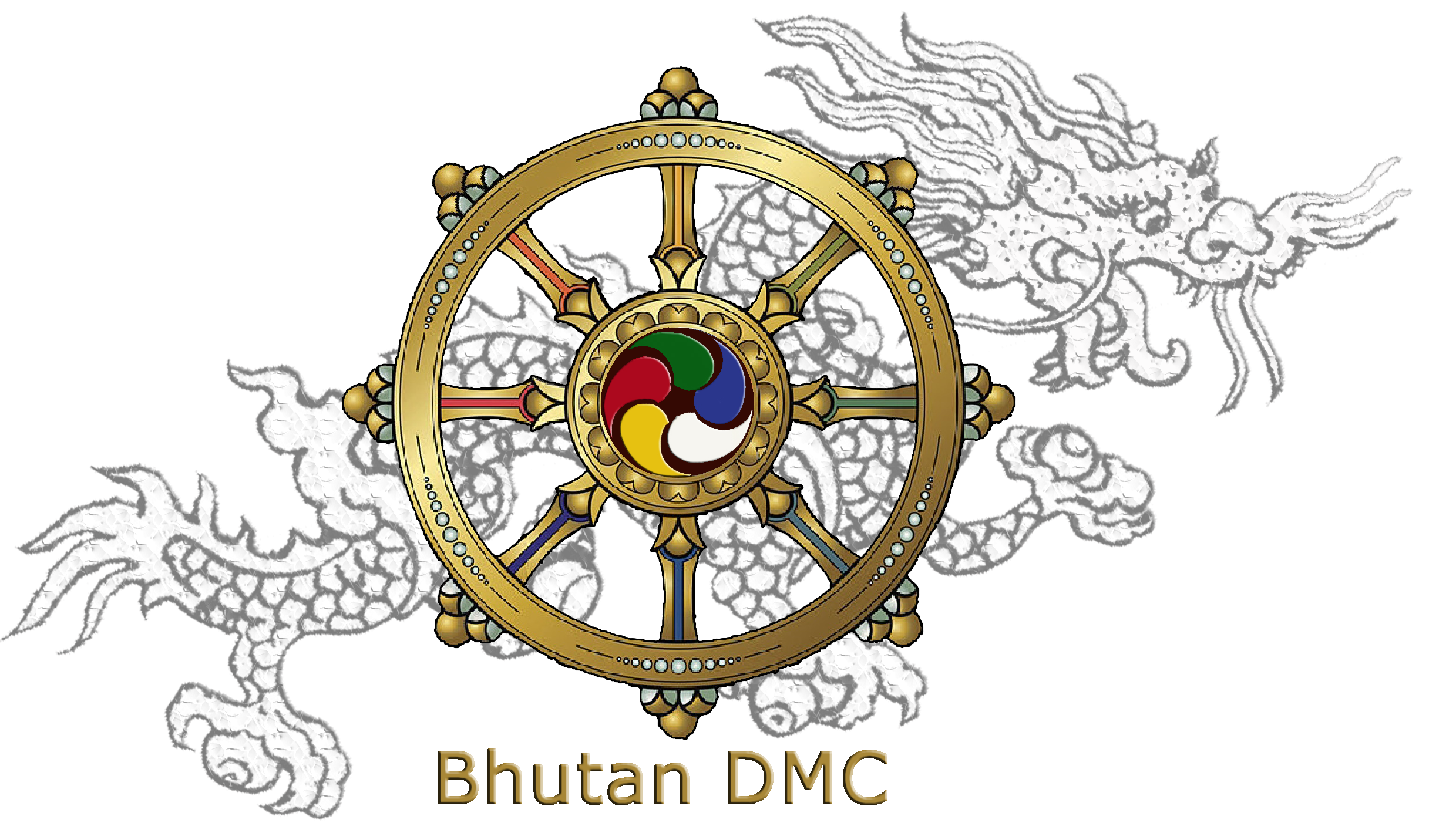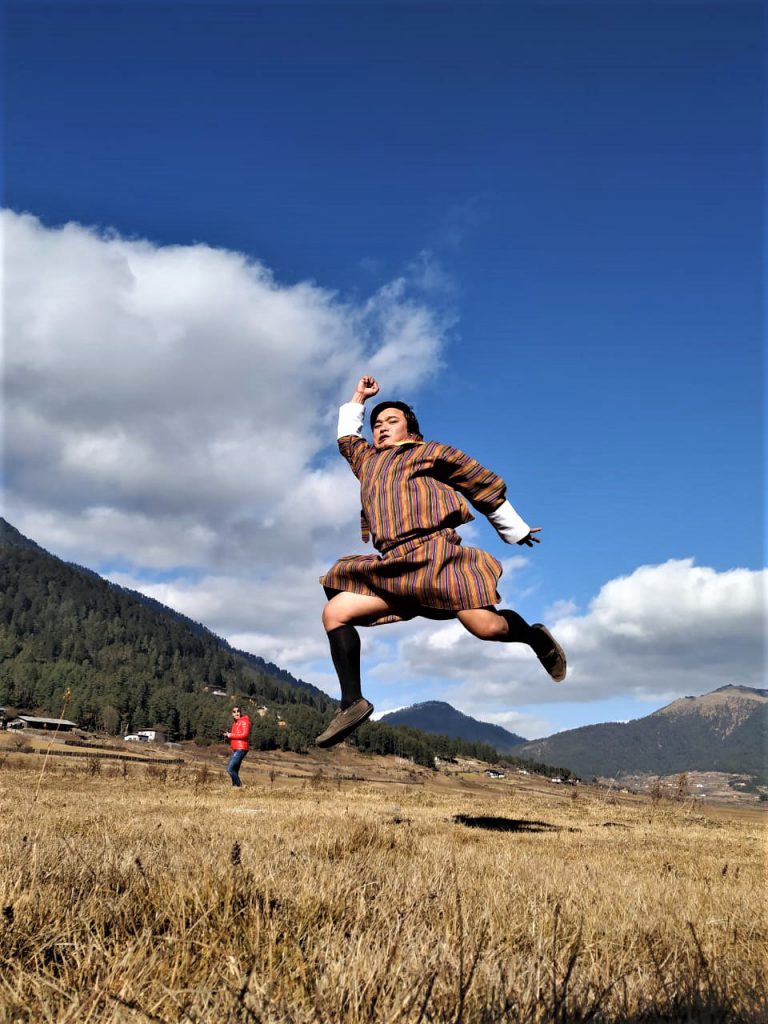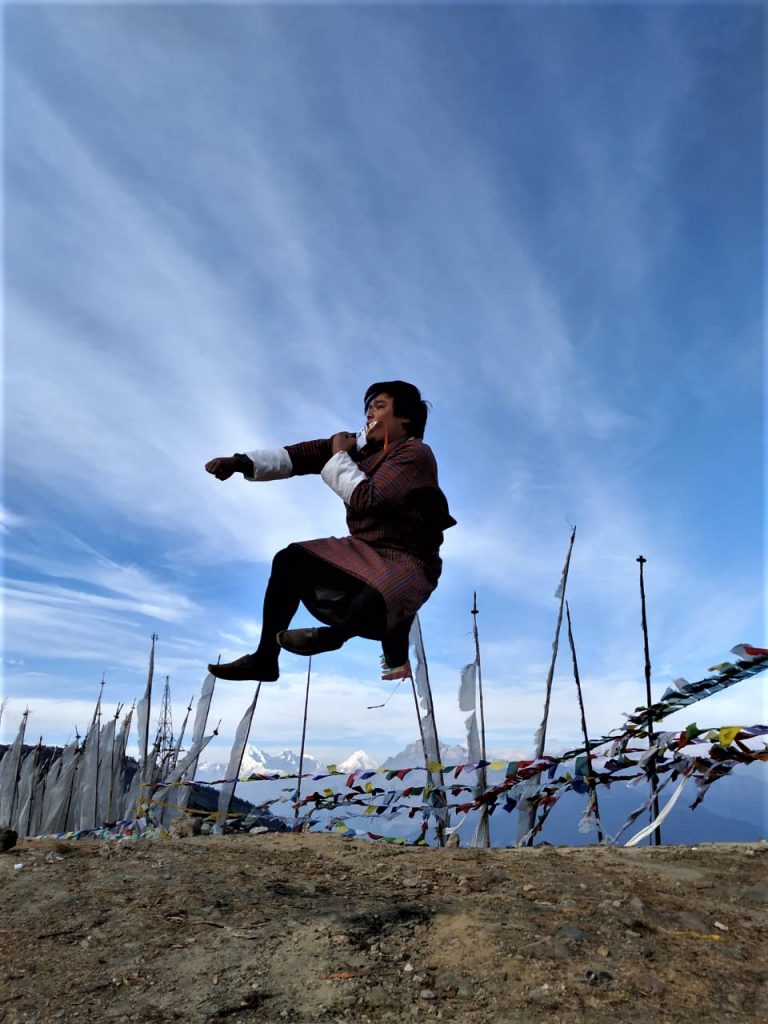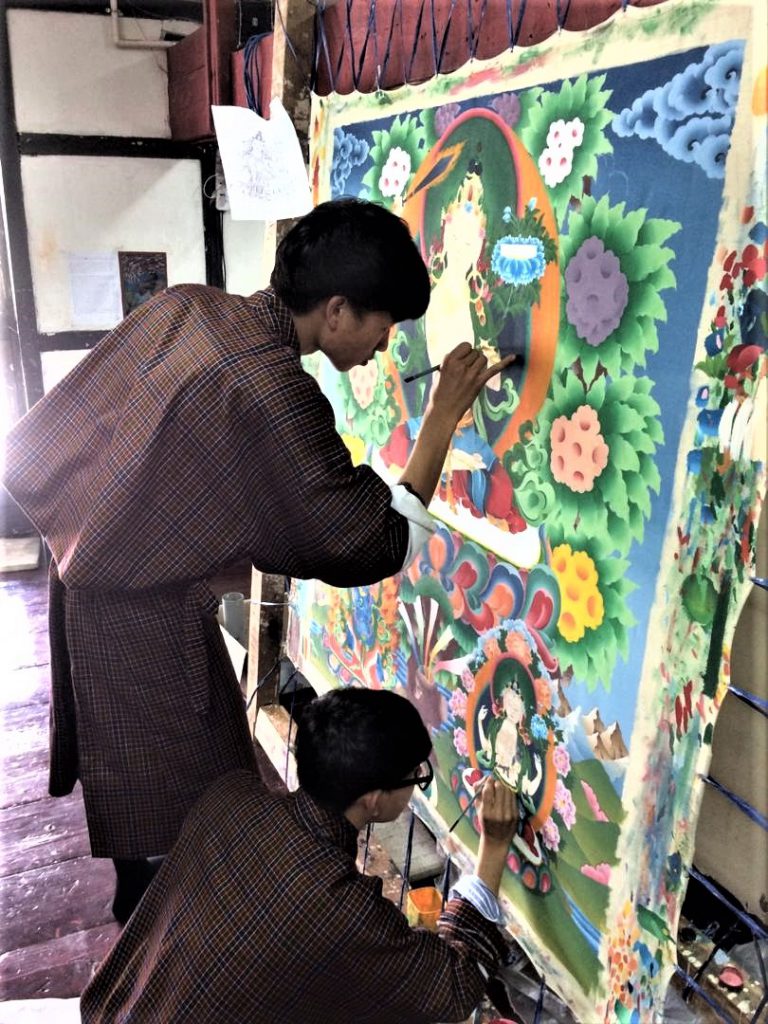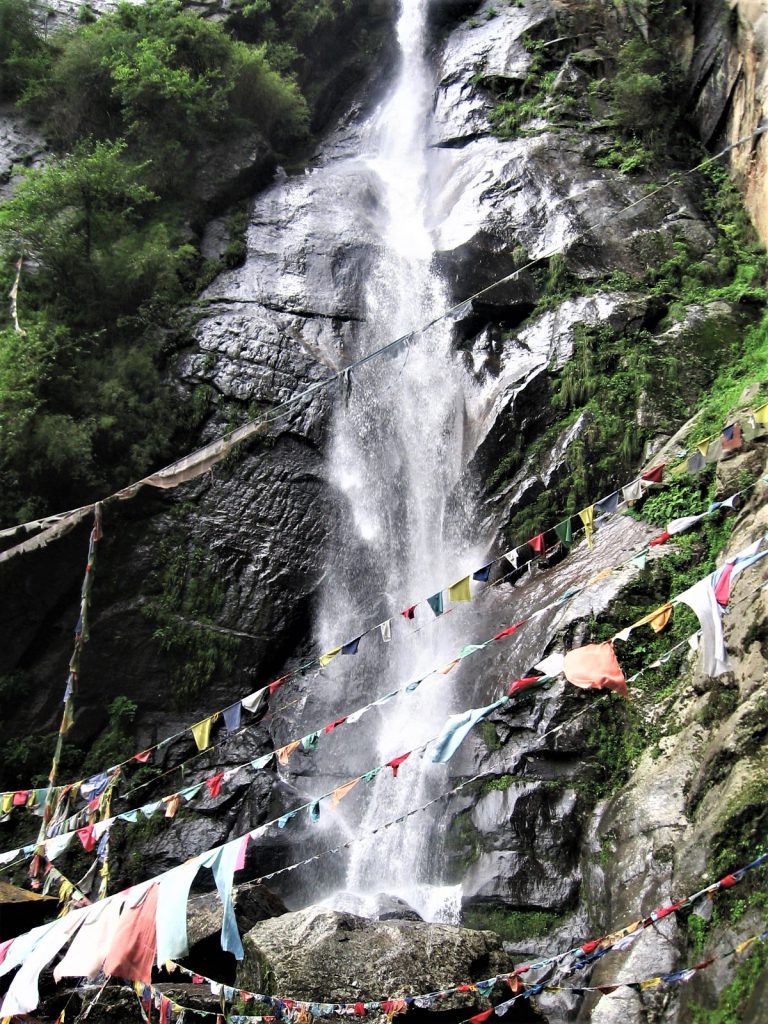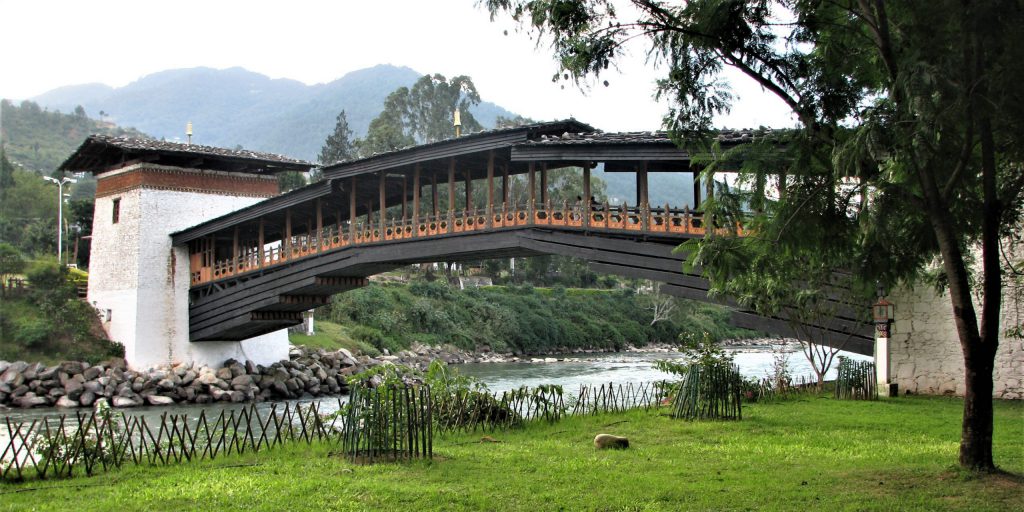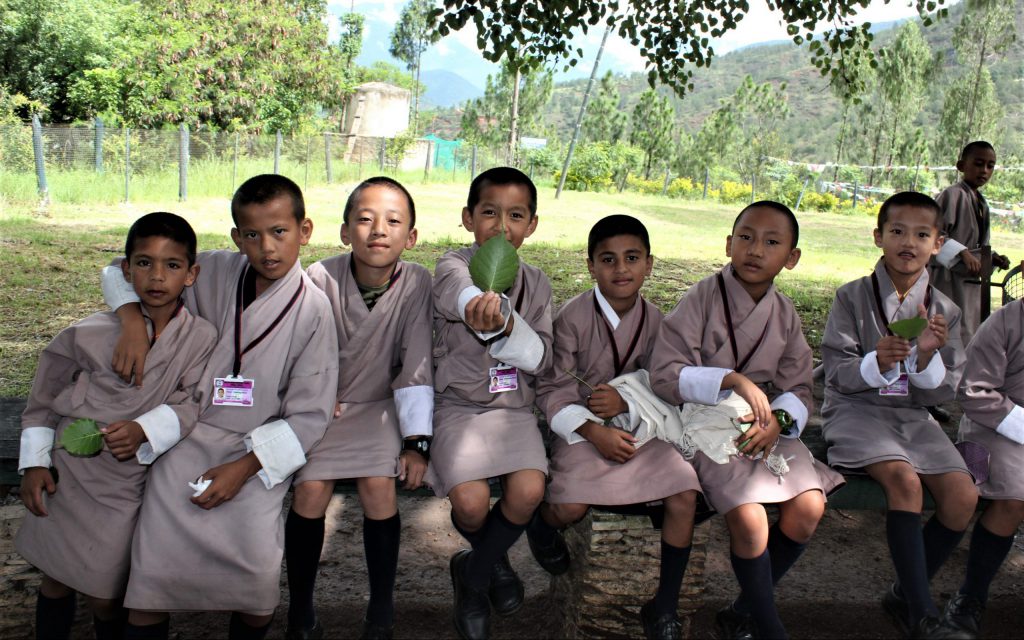Bhutan Photography tour is an amazing way to experience the temples, monasteries, mountains, people, culture & nature in some very beautiful and unique parts of the world. Bhutan is full of gorgeous photo opportunities – from bustling chilly market of Thimphu, to the serenity of Phobjikha valley, to the breathtaking Himalayas, there are so many magical moments. Travelling around Bhutan is truly amazing, full of surprises, happiness and absolutely exceptional photography opportunities.
Day 1
Arrive Paro by Flight & transfer to Thimphu (55 Km, approx. 1.1/2-hour drive)
On your journey to Paro, the panoramic views of the Himalayas are sensational, including the world-famous peaks. The approach through the Bhutanese foothills and the landing, including a few steep turns to land at the tiny airstrip of Paro becomes more exciting as you enter Bhutan.
Bhutan’s first gift to you as you disembark from the aircraft will be cool, clean fresh mountain air. After immigration formalities and baggage collection, you will be met by our representative, and afterwards drive to Thimphu, the capital town of Bhutan.
On arrival in Thimphu, check-into the hotel.
The first day in Bhutan is a leisure day; you may either take rest or go around the town with your camera. Your guide is always nearby to answer questions or assist you.
Overnight at hotel in Thimphu (Altitude 2,320m).
Day 2
Thimphu
After breakfast, visit:
Buddha Point (Kuensel Phodrang): A place for refreshing with a huge statue of Buddha on the top of the Kuensel Phodrang. The area also gives a very good view of the Thimphu valley from the west. You will be busy capturing the huge statue of Buddha and surrounding view of the Thimphu valley. You also have the shots of Simtokha dzong from here.
Sangaygang viewpoint: (2685 meters) to have view of whole Thimphu valley and walk through hundreds of colorful prayer flags that dot the hill overlooking the Thimphu valley.
Takin Reserve Centre: The takin, the national animal of Bhutan can be seen here. This particular animal is found only in the Himalayan region.
Changangkha Monastery: This monastery is built on a hill overlooking the Thimphu valley. It was built in 15th Century by Lama Phajo Drugom Zhipo. Many parents of Thimphu take their new born babies to this monastery to be blessed by a high lama.
Institute for Zorig Chusum: Commonly known as Arts & Crafts School or Painting School, the Institute offers a six-year course on the 13 traditional arts and crafts of Bhutan. On a visit, one can see students learning the various skills taught at the school.
National Memorial Chorten: This Chorten was built in 1974 in typical Tibetan style, in honour of the Third King Jigme Dorji Wangchuck, also known as “The Father of Modern Bhutan”. Memorial chorten is also a center of worship for the people living in Thimphu and contains many religious paintings and tantric statues.
Trashichhoedzong: “fortress of the glorious religion”. This is the center of government and religion, site of monarch’s throne room and seat of Je Khenpo or Chief Abbot. Built in 1641 by the political and religious unifier of Bhutan, Shabdrung Ngawang Namgyal, it was reconstructed in 1960s in traditional Bhutanese manner, without nails or architectural plans.
Another photography session after the dusk after lights are on capturing the night view of the following:
Night view of Tashichhodzong: We shall be taking photographs of the night view of the dzong (Fortress). It indeed looks fascinating with the lights surrounding it.
Night view of the National Memorial Chorten: The memorial chorten shall give you another different and beautiful shot due to lights around it in the night.
Overnight at hotel in Thimphu (Altitude 2,320m)
Day 3
Thimphu – Punakha (75 Km, approx. 3-hour drive)
After breakfast, drive to Punakha. On the way, stop for a photography session in Dochula pass.
Dochula pass is the most known pass in Bhutan, about 24 km drive from the Capital City Thimphu on the way to Wangduephodrang/Punakha. It is at 3,080 meters height. On a clear day, spectacular views of the mighty Himalayas mountain ranges can be seen. The pass also has 108 Druk Wangyal Khangzang Chhortens which is believed to bring multi fold merit to all sentient beings and it makes the pass a must visit place.
Interests for photography:
-The Dochula Pass
-The Drukgyal Wangyal Chortens
-The Himalayan Ranges
-Prayer Flags
-Flora and Fauna.
-The Dochula Temple
Drive to Punakha. As you near Punakha, you shall have a fascinating view of the Punatshangchhu River and the Wangdue valley for photography. You shall also come across simple villagers, villages and unique farmhouses for which you won’t hesitate to stop a while for a shot.
Visit Chimi Lhakhang. Located on the way to Punakha, this lhakhang is also known as the temple of fertility and was built by Lama Drukpa Kuenley in the 15th century. Lama Drukpa Kuenley is also known as the Divine Madman.
In the evening, leisure time for exploring the Punakha town and valley, however it is pretty sure that a photographer shall not be able to be at leisure trying not to miss the moments and interests he/she shall come across. For an artist, everything is beautiful, from the faces of innocent children to the uniquely dressed monks.
Overnight at hotel in Punakha. (Altitude 1,300m)
Day 4
Punakha – Wangduephodrang – Phobjikha (85 Km, approx. 3-hour drive)
After breakfast, photography session of the Punakha Dzong and the surroundings.
This Dzong was built by the Zhabdrung Ngawang Namgyal in 1637. It is built at the junction the Pho Chu and Mo Chu Rivers. The annual Punakha Tsechhu (Festival) is held here. The monk body resides in this dzong in winter.
Drive to Wangduephodrang:
Another Photography session at Wangduephodrang, the Rinchengang Village: it is small and clustered village located opposite to Wangduephodrang dzong (now only ruins remain after it caught fire in 2012). It is about 20 minutes hike uphill from the near road.
Continue on to Phobjikha with stop at places for photography and to view scenery.
The slopes en route Phobjikha (Gangtey) covered in dwarf bamboo and rhododendron is just fascinating. Photography is must here. During winter, Yak herders bring their Yaks in this place.”
The valley of Phobjikha (Gangtey) is one of the most beautiful spots in Bhutan. The surprise of finding such a wide, flat valley without any trees after the hard climb through dense forests is augmented by an impression of vast space, and extremely rare experience in Bhutan where most of the valleys are tightly enclosed. This place is the winter home of black necked cranes that migrate from the arid plains in the north to pass winter in milder and lower climate.
Overnight at hotel in Phobjikha. (Altitude 3,000m)
Day 5
Phobjikha
A real day for photography of the one of the most beautiful glacial valleys in the Himalayas. This is also the winter place for the endangered Black Necked Cranes. You have all the time in the world to get your best shots possible here.
You also have the opportunity to meet and photograph local villagers and interact with them to get an insight into the Bhutanese way of life. You also visit villages.
In the evening visit:
Gangtey Gompa: Gyaltse Pema Thinley, the grandson and mind reincarnation of Pema Lingpa founded the temple in 1613, and Tenzin Legpai Dhendup, the second re-incarnation, built the shrine. The present Abbot, Kunzang Pema Namgyal is the ninth re-incarnation.
Overnight at hotel in Phobjikha. (Altitude 3,000m)
Day 6
Phobjikha – Trongsa – Bumthang (153km, approx. 6-hour drive)
The journey to Bumthang is another day of new experiences and of course of new addition to your collections of perfect pictures.
The valleys, the winding roads, the simple villages and villagers, the monuments and the fascinating views pose for you on the way.
While in Trongsa, visit:
Trongsa Dzong: This most impressive Dzong in Bhutan, was built by Chogyal Minjur Tempa, the official who was sent by Zhabdrung to unify Eastern Bhutan and later enlarged at the end of the 17th century by Desi Tenzin Rabgay. Trongsa Dzong is the ancestral home of the present Royal Family.
Please remember, Trongsa Dzong is one of the most impressive dzongs in Bhutan. Photography is must.
Ta Dzong: An ancient watch tower. The chapel inside is said to be dedicated to the Trongsa Penlop, Jigme Namgyal.
Further 68 km drive across the Yutong-la pass (3,400m/ 11,155 ft) finally brings you to wide open cultivated Bumthang valley.
Overnight at hotel in Bumthang. (Altitude 2,600m)
Day 7
Bumthang
Here every sight is magnificent.
After breakfast, sightseeing includes:
Jakar Dzong: Literally meaning the Castle of White Bird. The current structure was built in 1667.
Lamey Goemba: A large palace and monastery built in 18th century by Dasho Phuntsho Wangdi.
Jambay Lhakhang: Built by King Srongsen Gampo of Tibet. In October, one of the most spectacular festival, “Jambay Lhakhang Drup” is staged here.
Chakhar Lhakhang: Literally meaning the Iron Castle, the original palace was made of Iron and hence the name “Chakhar”.
Kurjey Lhakhang: Named after body print of Guru Rimpoche.
After lunch, signtseeing includes:
Tamshing Lhakhang: Literally meaning the Temple of the good message, established in 1501 by Pema Lingpa.
Membarstho: Literally meaning, “The burning Lake”.
The evening ends with a walk around the Bumthang town and valley.
Overnight at hotel in Bumthang. (Altitude 2,600m)
Day 8
Bumthang – Wangduephodrang (200 Km, approx 7-hour drive)
After breakfast, drive to Wangdue across Yugong la and Pele la. The raw and natural beauty of the earth characterises much of Bhutan’s environment which is captivating for visitors and provides immense photo opportunities all along the drive.
In the evening take a leisure walk around the Wangdue Valley.
Overnight at hotel in Wangdue. (Altitude 1,300m)
Day 9
Wangdue – Paro (125km, approx. 4-hour drive)
After breakfast drive back to Paro descending back down from Dochu La, follow the way back up the dramatic Wang Chhu and Paro Chhu river valleys, before crossing through Paro Town towards the north end of the valley.
Driving from Wangdue to Paro gives you a unique experience for photography. The winding roads are fascinating. The villages and Buddhist chortens (stupas) add to your collection of perfect shots. Your guide gives importance to stopping along the way for photography.
En route stop at Simtokha Dzong for another short photo session, the place of profound tantric teaching, this dzong now houses a school for the study of the Dzongkha language.
Later in the day after checking into hotel, proceed to visit Ta Dzong, originally built as Watchtower, which now houses National Museum. The extensive collection includes antique thangkha paintings, textiles, weapons & armour, household objects and a rich assortment of natural and historic artifacts.
Proceed on to next destination nearby, imposing Rinpung Dzong, (fortress of the heap of jewels’). Along the wooden galleries lining the inner courtyard are fine wall paintings illustrating Buddhist lore – the perfect shots for your photography collection!
Night shooting – Later in the dusk as soon as the lights are on, drive to a location near the Rinpung Dzong to take its perfect shots. The night view of this Dzong (fortress) with the lights around it makes a perfect creation to capture. You may take your shot from different possible location so that you have your perfect shot.
Overnight at hotel in Paro. (Altitude 2,280m)
Day 10
Paro
Today is the day for a new experience; your morning starts with a 15 minutes drive to the base of the Taktshang Monastery. From here we will hike for about 3 hours up hill. Hiking uphill is difficult but the prize that awaits in reaching the top is just unimaginable.
Your Second Photography Session: In reaching the top, you shall be preparing yourself for your second photography after a short rest. The views downhill, the fluttering prayer flags, the rocky hill and the Taktshang Monastery everything awaits you here longing to be captured. Take your perfect shots precisely selecting your location and choosing what you want to photograph. After the photography session visit the Taktshang Monastery (Tiger’s nest Monastery).
Taktshang Monastery: The primary lhakhang was built surrounding Guru Rimpoche’s Meditation cave in the 1684 by Gyaltse Tenzin Rabgay. This incredible monastery clings to the edge of a sheer rock cliff that plunges 900 meters into the valley below. Legend has it that Guru Padmasambhava flew here on the back of a tigress.
Lunch at Taktsang cafeteria overlooking the Tiger’s nest monastery, walk back mostly downhill to the base for approx 2 hours and drive to the ruins of Drukgyel Dzong.
It was here that the Bhutanese finally defeated the invading Tibetans and drove them back. The peak of Jumolhari ‘Mountain of the Goddess’ can be seen on a clear day from here (alt. 7,329 meters /24,029 feet).
On the way back you shall be capturing the following:
-Mountain Jumolhari & mountains on the eastern Himalayan range
-Farm Houses and villages
-Village People
-Ruins of Drukgyal Dzong
-Prayer wheels and Prayer Flags
-Scenery
On your way back, visit:
Kyichu Lhakhang: This temple is one of the oldest buddhist temple in Bhutan. The Tibetan King, Songtsen Gompo, to consecrate the entire region of Himalaya, in the 7th century miraculously built 108 temples. Kyichu Lhakhang is considered to be one of them. This also gives you opportunities for photography.
The evening ends exploring Paro town and valley.
Overnight at hotel in Paro. (Altitude 2,280m)
Day 11
Paro – Chele la pass – Paro
After breakfast, drive to Chelala Pass for another destination of photography among the diverse flora and fauna.
Chelala Pass is the highest point between the Haa valley and Paro valley at an altitude of 3810 m. This place gives a very good view of the Himalayan Mountains, including the mountain Jumolhari. The place also offers good view down towards the Haa valley. A lots of prayer flags flutter in the place.
Today is the day for photography of the Himalayan Ranges as seen from the Chelala Pass. One local person describes it “if sky is the limit what is heaven for”.
Another good shot is the fluttering prayer flags with the Himalayan ranges. Photographers love the valley as seen from the point.
After taking your perfect shots return to Paro.
Afternoon stroll through the marketplace, alleys and riverside armed with your camera adding perfect shots to your collection.
Overnight at hotel in Paro. (Altitude 2,280m)
Day 12
Paro
After breakfast at the hotel, drive to the airport for flight to your onward destination. Our representative will help you with exit formalities and then bid you farewell.
